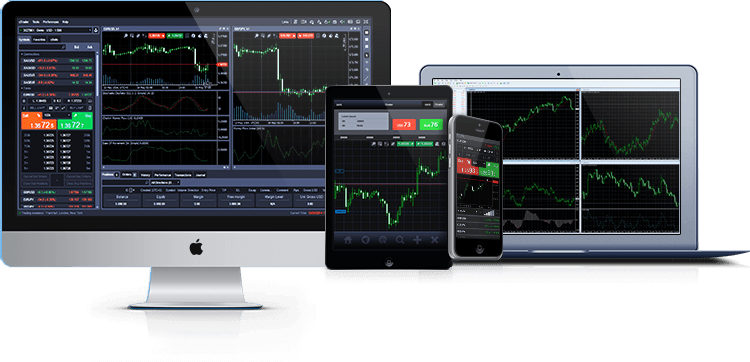
Introduction :
Intraday trading can be a daunting task. Knowing which technical analysis method to use to make informed decisions can make or break your success in the market. That’s why we’re here to help you figure out which technical analysis is best for intraday trading. In this blog post, we’ll cover the various methods of technical analysis and provide tips on how to use them effectively to maximize your profits. We’ll also discuss the pros and cons of each technique and provide insight into which one works best for intraday trading. So if you’re ready to master the art of intraday trading, read on for our guide to the best technical analysis methods.
Join Offline Technical Analysis Courses
Understanding Intraday Trading :
If you’re new to the world of intraday trading, it’s essential to grasp the basic concept behind it. Intraday trading, also known as day trading, refers to buying and selling securities within the same trading day. Traders aim to take advantage of short-term price fluctuations to make profits.
Unlike long-term investing, where investors hold onto their positions for an extended period, intraday traders make quick decisions based on real-time market data. They often rely on technical analysis tools and indicators to identify potential trading opportunities.
To be successful in intraday trading, you need to have a thorough understanding of market dynamics, including liquidity, volatility, and price action. It’s crucial to keep up with the latest news, economic releases, and industry developments that can impact the markets.
Furthermore, risk management is paramount in intraday trading. Setting stop-loss orders and profit targets can help you control losses and protect your gains. Successful day traders also have a disciplined approach, following their trading plan and avoiding impulsive decisions.
Popular Technical Analysis Methods for Intraday Trading :
Are you ready to dive into the exciting world of intraday trading? Well, you’re in luck because we’re about to explore some popular technical analysis methods that can help you maximize your intraday profits. These methods are widely used by experienced traders to identify potential trading opportunities and make informed decisions.
First up is the Moving Average method. This technique uses the average price of a security over a specific period to smooth out price fluctuations and identify trends. It helps traders determine whether the price is moving up or down and can be used to generate buy or sell signals.
Next, we have the Relative Strength Index (RSI). This indicator measures the strength and speed of price movements to identify overbought or oversold conditions. It is a valuable tool for determining when a security is due for a price correction, allowing traders to enter or exit positions at the right time.
Another popular method is Bollinger Bands. This technique uses a combination of a moving average and standard deviations to create a band around the price. It helps traders identify periods of high or low volatility, indicating potential trend reversals or breakouts.
The Ichimoku Cloud method is a comprehensive indicator that provides a holistic view of a security’s price action. It combines multiple elements, including moving averages, support and resistance levels, and momentum, to generate trading signals. This method is particularly useful for traders who prefer a visual representation of market trends.
The Stochastic Oscillator is another powerful tool for intraday traders. It compares the closing price of a security to its price range over a specific period, helping identify potential reversals or divergences. This indicator is often used in conjunction with other technical analysis methods to confirm trading signals.
Moving on, we have the MACD (Moving Average Convergence Divergence) method. This indicator uses two moving averages to identify potential trend reversals or confirm the strength of a current trend. It provides buy or sell signals based on the crossovers between the moving averages and the MACD line.
Lastly, we have the Fibonacci Retracement method. This technique uses the Fibonacci sequence and ratios to identify potential support and resistance levels. It helps traders determine where the price might reverse or continue its trend, allowing them to plan their entry and exit points accordingly.
Moving Average :
Moving Average is a popular technical analysis method used by intraday traders to identify trends and potential buy or sell signals. It helps smooth out price fluctuations over a specific period, allowing traders to get a clearer picture of the overall price movement.
The Moving Average method calculates the average price of a security over a set period, such as 10, 20, or 50 days. By plotting these averages on a chart, traders can visually see if the price is moving up, down, or sideways.
One common strategy is to look for a crossover between different moving averages. For example, when a shorter-term moving average (e.g., 10-day) crosses above a longer-term moving average (e.g., 50-day), it can signal a bullish trend. Conversely, when the shorter-term moving average crosses below the longer-term moving average, it may indicate a bearish trend.
Traders can also use Moving Average to determine support and resistance levels. If the price consistently bounces off a particular moving average, it could indicate a strong level of support or resistance.
While Moving Average is a versatile tool, it does have limitations. It can lag behind the actual price movement, which means traders may not enter or exit positions at the optimal time. Additionally, during periods of high volatility, Moving Average may not accurately reflect the current market conditions.
Relative Strength Index (RSI) :
The Relative Strength Index (RSI) is a valuable tool for intraday traders looking to identify overbought or oversold conditions in the market. This popular technical analysis method measures the strength and speed of price movements, giving traders insights into potential price corrections or reversals.
The RSI is displayed as a line on a chart with values ranging from 0 to 100. A reading above 70 typically indicates that a security is overbought, meaning that it may be due for a price correction or reversal. Conversely, a reading below 30 suggests that a security is oversold, indicating a potential buying opportunity.
Traders often use the RSI in conjunction with other technical analysis indicators to confirm trading signals. For example, if the RSI indicates that a security is overbought, traders may wait for additional confirmation from other indicators before entering a short position.
One advantage of the RSI is that it provides a clear visual representation of price momentum, making it easy for traders to identify potential turning points in the market. However, it’s important to note that the RSI should not be used in isolation. Market conditions and other factors should also be considered when making trading decisions.
Bollinger Bands :
If you’re looking for a technical analysis method that can help you identify potential trend reversals or breakouts, then Bollinger Bands is the one for you. This popular technique uses a combination of a moving average and standard deviations to create a band around the price, providing traders with valuable insights into market volatility.
Bollinger Bands consist of three lines: the upper band, the middle band (which is the moving average), and the lower band. These bands expand and contract based on market volatility, with wider bands indicating higher volatility and narrower bands indicating lower volatility.
Traders often use Bollinger Bands to identify periods of high or low volatility, which can signal potential trend reversals or breakouts. When the price is trading near the upper band, it suggests that the security is overbought, and a price correction or reversal may occur. Conversely, when the price is trading near the lower band, it indicates that the security is oversold, presenting a potential buying opportunity.
One strategy traders employ with Bollinger Bands is the “Bollinger Squeeze.” This occurs when the bands contract, indicating low volatility, and is often followed by a period of high volatility. Traders can use this squeeze as a signal to anticipate a significant price move and position themselves accordingly.
Ichimoku Cloud :
The Ichimoku Cloud is a comprehensive technical analysis tool that provides traders with a holistic view of a security’s price action. It combines multiple elements, including moving averages, support and resistance levels, and momentum, to generate trading signals. This method is particularly useful for traders who prefer a visual representation of market trends.
One of the key features of the Ichimoku Cloud is the “cloud” itself, also known as the Kumo. It consists of two lines, the Senkou Span A and Senkou Span B, which create a shaded area on the chart. This area represents support and resistance levels and can be used to determine the strength and direction of a trend.
In addition to the cloud, the Ichimoku Cloud also includes the Tenkan Sen and Kijun Sen lines. The Tenkan Sen is a short-term moving average, while the Kijun Sen is a longer-term moving average. These lines can be used to identify potential entry and exit points, as well as to confirm trading signals generated by other indicators.
The Chikou Span is another element of the Ichimoku Cloud. It represents the current closing price plotted backwards on the chart. Traders can use the Chikou Span to assess the strength of a trend and to identify potential support and resistance levels.
Stochastic Oscillator :
The Stochastic Oscillator is a powerful tool that intraday traders use to identify potential reversals or divergences in the market. This popular technical analysis method compares the closing price of a security to its price range over a specific period, usually 14 days.
The Stochastic Oscillator consists of two lines, %K and %D, that oscillate between 0 and 100. When %K crosses above %D and moves above the 80 level, it suggests that the security is overbought and may be due for a price correction. On the other hand, when %K crosses below %D and falls below the 20 level, it indicates that the security is oversold and could present a buying opportunity.
Traders often use the Stochastic Oscillator in conjunction with other technical analysis methods to confirm trading signals. For example, if the Stochastic Oscillator indicates an overbought condition, traders may wait for additional confirmation from other indicators before entering a short position.
MACD (Moving Average Convergence Divergence) :
The MACD (Moving Average Convergence Divergence) method is a powerful technical analysis tool used by intraday traders to identify potential trend reversals or confirm the strength of a current trend. It consists of two moving averages, the MACD line and the signal line, as well as a histogram that represents the difference between the two lines.
The MACD line is calculated by subtracting the longer-term moving average from the shorter-term moving average. The signal line, also known as the trigger line, is a moving average of the MACD line. When the MACD line crosses above the signal line, it generates a bullish signal, indicating that it may be a good time to enter a long position. Conversely, when the MACD line crosses below the signal line, it produces a bearish signal, suggesting a potential opportunity to enter a short position.
One of the key advantages of the MACD method is its ability to identify potential trend reversals. When the MACD line diverges from the price, it can signal a weakening of the current trend and the possibility of a reversal. Traders often use this divergence as a confirmation of other technical analysis indicators to make informed trading decisions.
Fibonacci Retracement :
The Fibonacci Retracement method is a powerful tool that can help intraday traders identify potential support and resistance levels in the market. It is based on the Fibonacci sequence and ratios, which have been found to occur in nature and can also be applied to financial markets.
To use the Fibonacci Retracement method, traders first identify a significant price move, whether it’s an uptrend or a downtrend. They then draw Fibonacci retracement levels on the chart to highlight potential levels where the price may reverse or continue its trend. These levels are based on key Fibonacci ratios, such as 38.2%, 50%, and 61.8%.
Traders often look for confluence between Fibonacci retracement levels and other technical analysis tools to increase the likelihood of a successful trade. For example, if a Fibonacci retracement level coincides with a moving average or a trendline, it may provide a stronger level of support or resistance.
If you found our guide “Intraday Trading” helpful, don’t forget to post comment! For more information please visit our websites www.chartedge.co.in. Must know websites for Indian stock market www.nseindia.com and www.bseindia.com
Join Offline Technical Analysis Courses
- 10 Powerful Futures and Options Trading Strategies for Beginners

- Expose the Power of Option Trading in technical analysis

- Understanding Bollinger Bands in Technical Analysis

- Understanding Moving Averages Convergence and Divergence (MACD) for Intraday Traders

- Why a stock trading course is worth considering?


